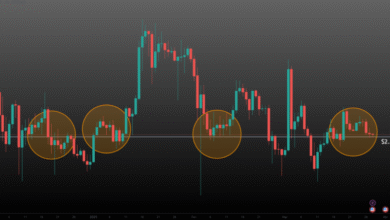Security & Surveillance with Image Recognition: How it Works

The sophistication of the technological era has streamlined many life aspects but at the same, it has given rise to cyber threats. Cybercriminals with technical expertise exploit vulnerabilities in security systems and get unauthorized access to services to conduct nefarious activities. Traditional methods of security often fall short in this menace, stressing the development of robust security tools offering unparalleled security and unmatched accuracy. Image recognition, an advanced object recognition tool emerges as a beacon of reliability in this aspect, offering scalable and efficient security solutions.
Image Recognition: Analyzing Data & Recognizing Objects
Image recognition technology coherent with advanced artificial intelligence software and machine learning tools, comes forth as a secure alternative to traditional security tools and measures. The integration of sophisticated tools enhances the overall accuracy and efficiency of the technology, allowing expedited analysis of the presented data. Furthermore, the technology enables multiple platforms and regulated entities to ensure the security of their systems and emerge as the most scalable one.
Working parallel to humans, the tools offer the robust and seamless identification of objects, faces, or elements present in the given frame and evaluate the visual data to make appropriate decisions. As sophisticated tools are trained on large volumes of datasets, the identification and differentiation between objects are executed in real-time, coming up as an accessible and scalable security tool.
Read more: Dallas Mavericks Vs Timberwolves Match Player Stats
Essential Components of Image Identification
The technology works in a series of steps to give accurate results and enhances the reliability of the systems integrating this technology. The process isn’t as simple as it appears, however, the complexity of the working of technology is of value, offering automated responses with greater precision.
- The images are preprocessed to enhance the quality and resolution which includes reducing noise, resizing the presented image, contrast management, and normalization. This step takes place before image detection to make the data more suitable for analysis and evaluation.
- Image identification employs deep-learning techniques like convolutional neural networks (CNNs) to extract features precisely. Feature extraction involves separating edges, shapes, or textures from the image to enable integrated algorithms to understand the data with greater precision.
- The systems are trained on different categories some are trained to differentiate human faces, some are trained to detect objects, and others to detect animals. Based on the requirements, the systems are authorized to evaluate and detect required elements.
- Once the required objects or faces are detected, the system triggers alarms and makes decisions accordingly. For perfect matching, the system initiates a response for accuracy and flags suspicious behavior or activities in real-time.
Image Recognition Technology in Enhancing Security
Image identification is the preliminary component of facial recognition technology which differentiates the selected objects from the rest of the items from the frame. The advanced technology technology combined with sophisticated deep learning networks enhances the security of systems by making sure that unauthorized access or suspicious activities are flagged timely. The prompt identification of unusual activities helps in the timely mitigation of illicit activities.
- Image recognition offers data-driven insights, as it is capable of identifying anomalies or patterns that deviate from usual activities. The tools are trained on a large volume of datasets, which enables the technology to actively detect unusual behavior such as an object left unattended in a high-security area, which could rise to any nefarious activity.
- Image recognition machine learning is trained on a large volume of datasets of genuine identities and suspicious behavior to make them capable of identifying the required elements. These tools are adapted to updated data which means the efficiency increases with time, reducing the potential threats of fraudulent activities.
- These systems are sophisticated to the extent that they go beyond simple identification of objects, they can even detect behavior or flag unusual patterns. The timely detection of cyber threats offers quick responses to emergencies, enabling real-time monitoring and mitigation of potential risks.
- The technology is particularly useful across vast surveillance networks where high security and vigilance are required. This proactive approach offers potential advantages in high-security areas by actively flagging unusual patterns or suspicious behavior, preventing incidents before they can take place.
Potential Applications
Image recognition machine learning is extensively employed by many industries and entities, offering accurate identification and enhancing security against unauthorized access.
- Smart devices use image identification to make sure only legitimate owners of the devices are unlocking the applications and fraudulent identities are completely warded off.
- The technology is used in automated vehicles, allowing the prompt identification of objects, side vehicles, or any hurdle, driven by a streamlined self-driving experience.
- Image recognition technology is largely deployed to enhance security and facilitate surveillance, enabling the timely detection of unusual and suspicious activities.
Future Prospects
Continuous advancements are projected in artificial intelligence and machine learning, which can substantially enhance the accuracy and increase the reliability of image recognition technology. Furthermore, regulatory frameworks regarding the responsible use and implementation of the technology for the intended purpose could be established to mitigate privacy concerns.




